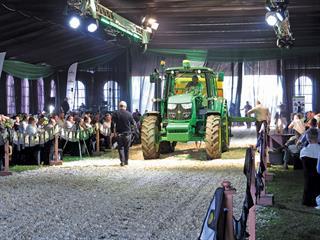Although beans are normally quick and easy to grow, they have a disproportionate number of potentially hazardous diseases. M ost seedling diseases are associated with poor soil, which usually means low organic status and gravelly or sandy texture. Diseases are most unlikely in a no-till system. Hot weather and heavy thunderstorms can set off these diseases in questionable soil.
There are a few root diseases that need to be addressed. Regular bean growers will know them, but if you are starting out your soil may not yet be infected. Rhizoctonia his disease can be very destructive, particularly in sandy and gravelly conditions when the weather is hot and soils are wet, or when a crust forms on the soil surface. Seedlings will wilt and show distinct red lesions up the stem from the roots to ground level. The disease reduces yields and may thin out the stand. Seed treatments work rather well, and planting the seeds as shallowly as possible also helps. The disease may not kill the plants – it depends on the number of lesions and the stage at which infection started. Fusarium here are several similar pathogens responsible.
These pathogens can be introduced by infected seed, so use only seed from a reliable source. Pods can become infected and produce lesions that make them unmarketable and are also the source of infected seed. The disease develops slowly, which means that the plants may not wilt as new roots are formed. stand becomes patchy, with yellowing of the older leaves and die-out in more severely affected sections. Plants are more vulnerable when under any form of stress, including climatic and soil conditions, insufficient plant nutrients and underground wounds. Fungicide treatment of the seed and/or the planting row can be helpful but does not guarantee an undamaged crop.
Pythium his is a typical “damping off” fungus and different species are active at different temperatures. They all prefer soils with high moisture and low oxygen. Plants stop growing and may die off, with blackening of the roots and the lower stem. Mechanical cultivation injury may worsen the problem. Treating the seeds with fungicide helps. o reduce the threat of these diseases, don’t overwork your soils, and maintain their structure. – Bill Kerr ([email protected] or call (016) 366 061).









